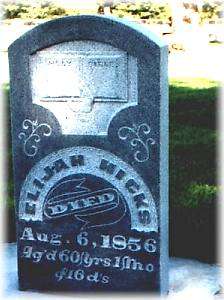Famous Boulevards
category : Famous People
| PATTI PAGE BLVD. |
Pattie Page was born Clara Ann Fowler in 1927, one of 11 children. Her father was a railroad foreman and her mother picked cotton to help support the family. While in high school, one of the students failed to appear for a stage performance and Clara Ann stood in. She belted out her version of "Frankie & Johnny" and her singing career was launched. That very summer she went to a radio station in Tulsa and was hired to do several weekly shows. The Page Milk Company sponsored a show on this station called "Meet Patti Page." They gave the name and the job to Clara Ann. She went on to sell millions of records and had the number one spot on the billboard charts for 30 weeks with "Tennessee Waltz." This is the biggest hit record by a female artist, selling more than 10 million copies.
| WILL ROGERS BLVD. |
William Penn Adair Rogers (1879- 1935) was born on a ranch near Claremore, I.T. He was an American humorist and social critic, beginning as a cowboy and rising to world fame. Rogers was popular on radio and appeared in 50 silent movies and 21 talking films, wrote 6 books and a column that appeared in more than 350 daily newspapers. Rogers gained much of his popularity as an easy-going lecturer on current events. During his lectures he chewed gum and performed rope tricks while kidding about business, government, people and politics. he began most of his lectures and columns saying, "All I know is what I read in the papers."
| LYNN RIGGS BLVD. |
Rollie Lynn RIGGS was born August 31, 1899, a few miles southwest of Claremore, I.T. and passed away in New York City the morning of June 30, 1954. He was a poet and playwright and while in France wrote the play "Green Grow the Lilacs." The musical "Oklahoma" is an adaptation of "Green Grow the Lilacs" and has played in cities across the United States, as well as Australia, Canada, Germany, Israel, England and Arabia.
| J.M. DAVIS BLVD. |
John Monroe Davis (1887 - 1973) was born in Arkansas, near Calion. When he was seven, his father gave him a muzzle loading shotgun. That was the beginning of his collection. In 1916, he traded 2,000 acres of Arkansas timberland for the Mason Hotel in Claremore. In 1917, he began displaying his gun collection in the lobby. His collection grew to cover the hotel lobby walls, the ballroom, the upstairs hallways and seven private rooms. In 1965, Davis transferred ownership of his collection to a trust, the J.M. Davis Foundation, Inc. The Foundation entered into an agreement with the State of Oklahoma for preservation of the collection. Within four years, the museum opened to an enthusiastic public on Davis' 82nd birthday.
| BLUE STARR DR. |
Blue Starr II (1858 - 1944), was orphaned at age two and sent to the Cherokee Orphan Asylum at Salina. At age eleven, he ran away to live with his aunt, Nancy Jane Chambers, in Claremore. He attended West Point only four months. At fourteen, he went to work for the C.W. Turner Ranch near Inola. In 1886, he married Jesse Marion Hutchins and had four children. In 1898, he moved his family to Claremore so that his children could receive a quality education. He bought 169 acres and built a fourteen room, three-story home. Blue Starr II was an avid Democrat and was elected to the National Council of the Cooweescoowee District without opposition from 1894 - 1904. He was noted for his honesty and integrity.
| STUART ROOSA BLVD. |
Stuart Allen Roosa (1933 - 1994) was not born nor did he die in Oklahoma, but his roots were firmly planted in Rogers County soil. Roosa grew up on the east side of town and graduated from Claremore High School in 1951. On January 31, 1971, with Alan Shepard and Edgar Mitchell, he was launched to the moon aboard Apollo 14. While his partners explored the lunar surface, Roosa orbited in the command module, Kitty Hawk, 69 miles above the moon. On March 26, 1971, Claremore welcomed the "Apollonaut" back for a visit. He presented Claremore High School with a flag he had taken to the moon, and the Mayor, Jack Marshall, presented Roosa a key to the city. Roosa later served a Backup Command Module Pilot for Apollo 16 an 17, and was involved with NASA for 10 years.
Come visit us in Claremore, Oklahoma

